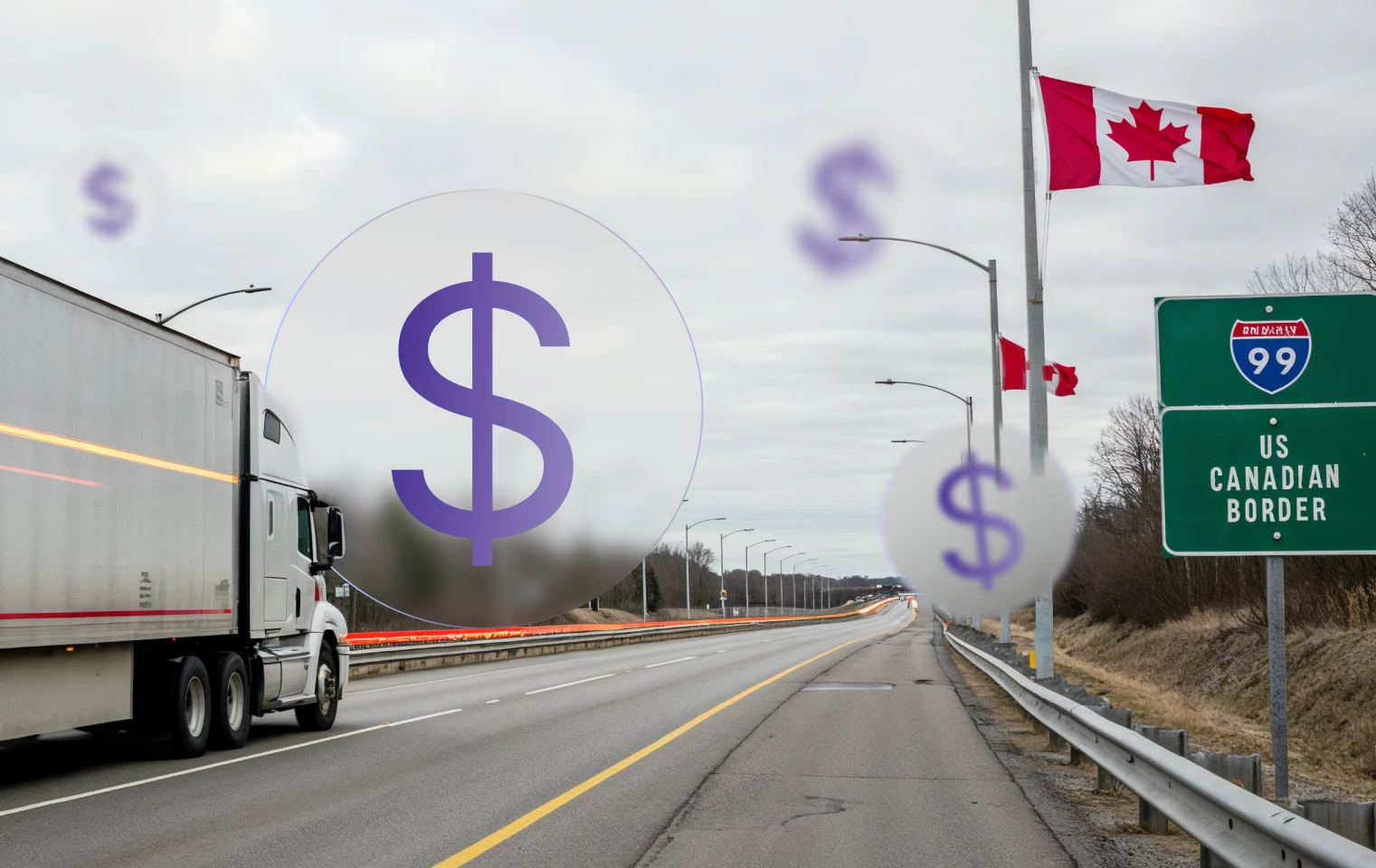
Sahiba Cuccria
8 mins read
10 mins read

You know that moment when you're about to hit 'book shipment' and suddenly panic because you can't decide between Canada Post or that courier service? Welcome to every business owner's daily struggle. The companies that figure this out early are saving thousands annually where money that could be funding your next big move instead of disappearing into shipping costs.
Here's the plot twist nobody talks about: the damage goes way beyond your wallet. Pick the wrong service, and you're setting yourself up for customer service headaches, reputation hits, and those 'what if' moments that keep you up at night. Let's solve this shipping puzzle once and for all.
Think of postal services as the reliable family sedan of shipping—they'll get you there, just not in a hurry. Canada Post and USPS are government-run operations that deliver everywhere, even that cabin in Muskoka or ranch in rural Montana. They're affordable, dependable, and perfect when you're not racing against the clock.
Courier services? They're the sports cars. Companies like FedEx, UPS, and Purolator are all about speed, tracking, and premium service. Yes, you'll pay more, but when that contract absolutely needs to be in Vancouver by tomorrow morning, they're your best bet.

A courier service is essentially a private delivery company that's built its entire business around getting your stuff there fast. We're talking same-day delivery in major cities, next-morning service across the country, and real-time tracking that lets you watch your package move across the map.
What makes courier services special:
The big players you'll recognize:
Now, postal services are a different beast entirely. These are government operations with a mandate that private companies would never touch: deliver mail to every single address in the country, no matter how remote or unprofitable.
In our neck of the woods, that means:
What postal services bring to the table:
Here's something many business owners don't know: Canada Post's rural reach is unmatched. While FedEx might slap a $30 surcharge on that delivery to Nunavut, Canada Post charges the same rate as shipping to Ottawa.
Let's talk real numbers:
| Service Type | What You Get | Typical Delivery Time |
| Courier Services | Same-day in cities, overnight nationally, 2-day economy | 0-2 business days |
| Postal Services | Standard mail, expedited options, express services | 2-8 business days |
But here's the thing—courier "guarantees" are actually guaranteed. When UPS says next-day by 10:30 AM, they mean it. Miss that deadline? You can get your money back. Postal services? Their delivery standards are more like guidelines.
2. What It's Going to Cost You
I've crunched the numbers on typical shipments, and the differences are eye-opening:
| Package Type | Postal Service | Courier Service | You Save with Postal |
| Local delivery (1kg) | $8-15 | $25-40 | 60-70% |
| Cross-country | $15-30 | $45-80 | 50-65% |
| Express national | $50-90 | $90-150 | 20-40% |
| International | $25-60 | $80-200 | 40-70% |
Based on 2025 rates—your actual costs will vary by specific service and destination
3. Tracking: Basic vs Obsessive
Courier tracking is like having a GPS tracker on your package:
Postal tracking gives you the highlights:
That's about it
4. Where They'll Actually Deliver
This is huge for Canadian businesses:
Postal services win at:
Courier services prefer:
| What You Get | Postal Service | Courier Service |
| Door pickup | Sometimes, for a fee | Always included |
| Packaging | Basic supplies | Specialized options |
| Insurance | Up to $1,000-5,000 | Sky's the limit |
| Customs help | Forms and prayers | Full brokerage service |
| Account manager | You're on your own | Dedicated rep for volume shippers |
| Tech integration | Basic APIs | Full integration suite |
Your wallet matters more than the clock:
It's not urgent:
You're shipping to the boonies:
The package is small and light:
Time is money:
The stakes are high:
You're shipping B2B:
Customer experience is paramount:
"Is Canada Post a courier service?" I get this question daily, and the answer matters for your shipping strategy.
Technically? No. Canada Post is a Crown corporation—a government-owned postal service. They have universal service obligations that private couriers would run from.
Practically? It's complicated. Canada Post offers services that look and act like courier options:
Here's why it matters: When forms ask for "courier" service (like passport applications), they usually mean private companies. But many government agencies accept Canada Post's tracked services as equivalent. Always check the fine print.
The real-world difference? Canada Post Priority might get your package there just as fast as Purolator, but Purolator has the infrastructure and focus of a true courier service. It's like comparing a Swiss Army knife to a specialized tool—both work, but one's built for the specific job.
Postal services leverage the Universal Postal Union—basically a treaty that lets postal services work together:
Courier services own their international networks:
Sarah runs an online fashion boutique in Toronto. Her strategy? Canada Post Regular Parcel handles 75% of orders—saving her $8-12 per package. But orders over $200? Those go Purolator. International orders? Always courier.
Monthly savings: $2,000+ Customer complaints: Zero
Here's what smart businesses have figured out: you don't need to choose just one carrier. With eShipper's platform, you can:
Forget the old "pick one carrier and stick with it" mentality. Here's what works in 2025:
With postal services:
With courier services:
Postal service tech:
Courier service tech:
Look, the difference between postal and courier services boils down to one question: what matters more, your wallet or your watch?
For most businesses, the answer is "both"—which is why the smart money's on using each service for what it does best. Let postal handle your everyday shipping and save courier services for when speed really matters.
This hybrid approach isn't just theory. It's how successful businesses balance customer satisfaction with sustainable shipping costs. And it's exactly what platforms like eShipper make possible.
Mail is handled by the postal service like Canada Post or USPS, usually with standard delivery times. Couriers are private companies that deliver faster, often with tracking and extra services.
Yes! Couriers can get your package to its destination in a day or two, while regular mail usually takes several days longer.
Postal addresses can include PO Boxes. Courier addresses must be an actual street address since couriers don’t deliver to PO Boxes.
Yes, it can. Postal services deliver parcels, though they’re generally slower than couriers.
It’s a private delivery service that offers quick shipping, tracking, and sometimes pickup right from your location.
USPS is a postal service, but it does have faster options like Priority Mail Express that work similarly to courier services.
It’s mainly a postal service, but it offers faster “courier-like” options such as Priority and Xpresspost.
A courier address is a real, physical address where deliveries can be made.
Yes, if you use services like Xpresspost or Priority. But always double-check the requirements of the agency you’re sending it to.
Post is the traditional mail system run by the government. Courier is a private, faster delivery option with extra features.
No. Registered mail is part of the postal service, offering tracking and proof of delivery, but it’s slower than a courier.
A carrier is any company that moves goods. A courier specialises in fast, tracked deliveries.
Courier is almost always faster and sometimes same day. The post usually takes several days.